AIM high

Iceland has returned to the Irish market under the master franchise of the AIM Group. Fionnuala Carolan spoke to CEO Tom Keogh about its projected plans.
14 February 2011
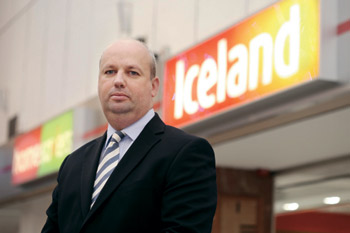 Although no official announcement was made until late 2010, plans for the reintroduction of Iceland stores to the Republic of Ireland had been underway since early 2008. Iceland’s last foray into the Irish market ended in 2005 with the group pulling out of Ireland completely but with its new Irish partner, plans to grow the brand here are well underway. The English chain has over 800 stores in the UK and are aggressively growing the brand.
Although no official announcement was made until late 2010, plans for the reintroduction of Iceland stores to the Republic of Ireland had been underway since early 2008. Iceland’s last foray into the Irish market ended in 2005 with the group pulling out of Ireland completely but with its new Irish partner, plans to grow the brand here are well underway. The English chain has over 800 stores in the UK and are aggressively growing the brand.
The chairman of the AIM Group, Indian-born businessman Naeem Maniar heard about Iceland’s plans to grow and made his interest known. Six months of negotiations ensued and in late 2008 the first store was opened in Ballyfermot, in one of the former Iceland premises.
Following this, stores were opened in Finglas, the Navan Road and the Ilac centre. The group waited until the Ilac store opening last November to announce its expansion plans. They got a fantastic reaction from the media, when they revealed a €25 million investment in opening 40 Iceland stores, 15 Home Savers stores (a new discount chain of homeware stores), and 50 €2 Euro stores across the country creating 2,175 jobs over four years.
Won’t do it for vanity
Keogh came on board as CEO of the AIM Group in early 2010 to help facilitate the launch and the roll out of the new stores, something he had a wealth of experience in. As former CEO of Gala he opened over 100 stores in under two years. “I was called in to look at their retail plan as the AIM Group is traditionally a wholesale organisation as opposed to a retail organisation,” he says.
Keogh says that the plan of opening 40 Iceland stores in four years is a conservative estimate. “Forty stores won’t be an issue. What we won’t do is we won’t do it for vanity. It will be done purely for commercial reasons and it will be the right decision, the right location, the right store before opening anything. Our plan is 40 but it may happen in a quicker time frame than four years.”
Considering his track record in opening stores with Gala this estimate would not seem like a huge undertaking for Keogh. “Iceland is only a part of the business that needs attention so it’s not a huge target for me personally but we are always mindful of the risk factor. We look back at what people have done over the last few years and it’s a learning curve for everybody. We have people that we employ and want to make sure they stay employed so we won’t take any risk that would risk any other part of the business.”
Investments of this scale are not common place these days but Keogh says that they’ve made decisions in the full knowledge and awareness of exactly what’s going on in the country. “We know what happened in the budget and what will happen in the budgets to come. The model is one that will fit well in that environment. We haven’t looked at anything through rose-tinted glasses. We’ve had good advice and a lot of solid people around us. We’re very lucky that everything we have planned is well financed. We have the full support of the Bank of Neroda in India, BOL and Ulster bank. We will look at every opportunity and judge it on its merits.”
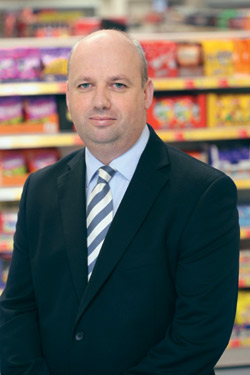 Why did Iceland leave Ireland before?
Why did Iceland leave Ireland before?
Keogh says that Iceland pulled out of the Irish market in 2005 due to internal issues. “Pulling out of Ireland in ’05 was more of an internal business decision than a commercial situation. A new management team had been brought in and they had tried to change the model away from a frozen food retailer to a general retailer and the business wasn’t performing and was losing money. They started diversifying into different products like toys, newspapers and magazines. The original owners of the company went back in and said anything that wasn’t core had to go. Ireland wasn’t core, they didn’t have a base here and it was taking time and personnel away from where the issues were in the UK,” he explains.
Since those problems were ironed out Iceland has gone from a loss making organisation to a company that made U230 million last year and turned over £2.7/3 billion in a year making it a very profitable, well run company. However it’s hard to get away from the fact that many associate Iceland with controversial celebrity Kerry Katona. The company has since stopped using her to endorse the brand but one wonders if it has somewhat scarred the brand. “Anytime you use a celebrity for anything you take a risk .I don’t think people would not go in to Iceland because of Kerry Katona. They’ve moved away from the celebrity and moved to the ‘Mum’s’ campaign and that has been a huge success, better than any celebrity,” says Keogh.
The main difference this time around with its Irish operation is that the group has an Irish partner. Keogh says: “I believe that if you are doing business in a country you should know the country and know how people shop as opposed to trying to make them do what you want. That’s a big change this time around for Iceland. We’ll tweak the brand every so slightly towards the Irish market. They don’t do the Lotto in the UK but we will here in Ireland. We’ll be trialling one or two things like that over the next 3-6 months to see if it works.”
Background
Keogh brings a wealth of experience with him to this role. As a manager in Dunnes Stores at the ripe young age of 22 he went on to hold senior management roles with Londis Topshop and Musgrave before being appointed CEO of Gala at just 32. Of his time with Gala he says it was essentially a golden age. “It was the boom time for convenience. We would have opened 100 stores in two years. We’ll never see the likes of it again. People couldn’t seem to get enough of the convenience store offering. We were opening a store a week. It was phenomenal. There was no issue with regards finance and there were a lot of independent retailers that realised the best place to be was within a group.
“Gala was fantastic as I went into this organisation that wanted to grow but probably hadn’t reached its potential. Turnover grew from €200 million to €530 million. I can’t take the credit for being in the right place at the right time and having a good team of people around me.”
In the last few years since leaving Gala Keogh has started his own business, a van sales operation, called Acorn Sales and Distribution. His association with the AIM Group came about when they invested in that business. When the deal was being done with Iceland they were appointing a senior management team and Keogh was asked to head up the project.
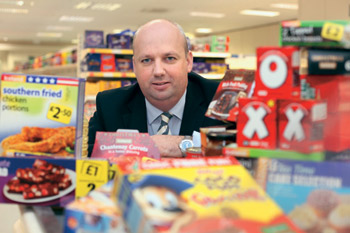 Deciding on location
Deciding on location
Finding the right location will be one of the main issues in growing the brand. There are hundreds of empty premises around the country that would have the capacity for an Iceland store model but certain criteria need to be met for the brand to work.
“The model doesn’t sit on its own so it would need a shopping park/centre. You won’t see us out in the countryside or even the draw in a small centre. There are a lot of sites out there that would have been thought of as good a few years ago because of planned housing but a lot of that housing was never built or isn’t occupied so they are no longer appealing. You’re back to what every business needs which is footfall.”
Convenience stores are not regarded as competition because Iceland doesn’t sell cigarettes or newspapers. “The model is suited to sitting beside a multiple or a convenience store. In the UK they sit quite comfortably beside a Tesco or an Asda or wherever there is footfall. And here we wouldn’t be afraid to sit beside a Tesco or Dunnes. It’s a very niche brand and we wouldn’t really have a direct competitor. Iceland won Discount Supermarket of the Year in the UK in 2010, but would they have seen themselves as a discounter? No. They see themselves as more frozen foods specialists as opposed to main line supermarket discount store.”
The Iceland model is a conservative one in many aspects. Stores range from 5,000-7,000 sq ft with an extra 2,000 sq ft for back up and refridgeration. “It’s a tight model but it’s very simple”, says Keogh. “They really have it down to a fine art of what to order, where things are placed etc. It’s a nice operation to manage.”
Benefiting the Irish market
Much of the fresh food sold in the new Iceland stores is being sourced in Ireland and they are also using the services of Irish retail tech and building companies. Keogh says that supporting Irish suppliers was a big concern. “You have to have certain Irish products. Irish consumers want to buy Lyons tea and Pat the Baker Bread. We’re in negotiations with a number of Irish suppliers and the beauty of it is that we have been able to facilitate meetings for many of these suppliers with the UK. It will create big opportunities for sales over there.”
Keogh describes Iceland as fresh food specialists. In the UK the breakdown of food in the stores is very simple- it’s a third frozen, a third ambient and a third fresh. Over here frozen accounts for just over 50% and then the rest of it is divided between ambient and fresh. “Our model is better for frozen than the UK one which is strange and something they are looking at.”
AIM
The AIM Group has been building its head office to facilitate all the planned growth. Situated in the Robinhood Industrial Estate in Dublin, it now employs close to 300 staff. “We are trying to get the structure right today so things will be right for the future. We don’t want to grow too quickly before we have the infrastructure to support it.
The next wave of store openings is said to be in spring. “There will be three to four more stores open around April time but I can’t say where yet as negotiations are still ongoing. We’re in negotiations on about 15 sites now.” Keogh says that sites are being considered in every town and city around the country so don’t be surprised to see one pop up near you in the not too distant future.



 Print
Print

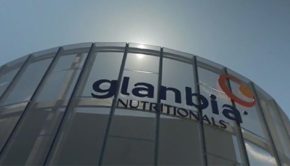

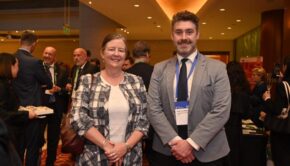


Fans 0
Followers